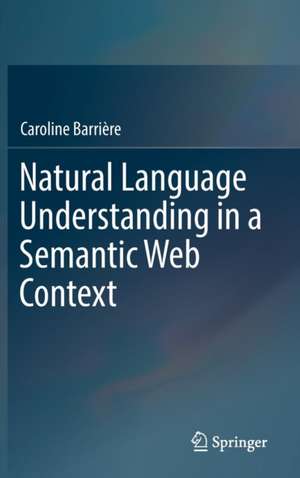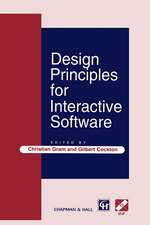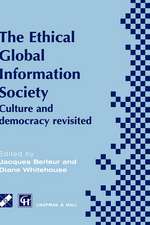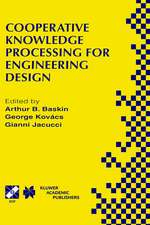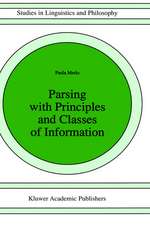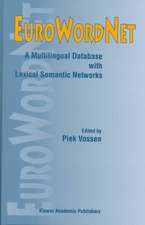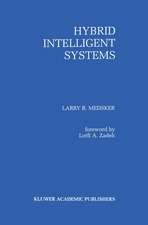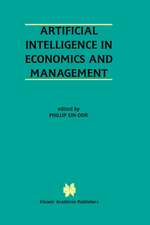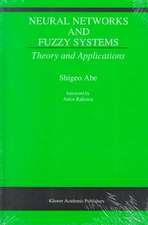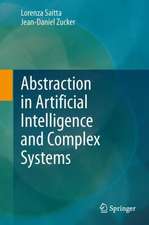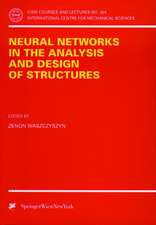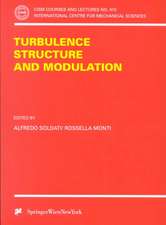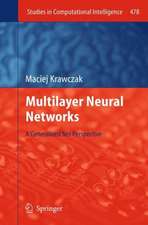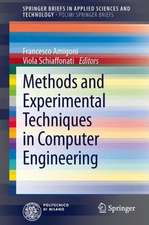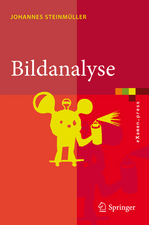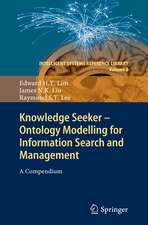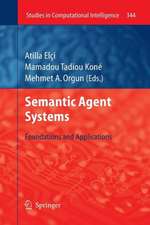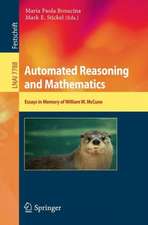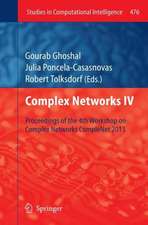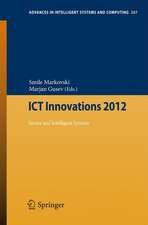Natural Language Understanding in a Semantic Web Context
Autor Caroline Barrièreen Limba Engleză Hardback – 24 noi 2016
This book is divided into four parts. Part I “Searching for Entities in Text” is dedicated to the search for entities in textual data. Next, Part II “Working with Corpora” investigates corpora as valuable resources for NLP work. In turn, Part III “Semantic Grounding and Relatedness” focuses on the process of linking surface forms found in text to entities in resources. Finally, Part IV “Knowledge Acquisition” delves into the world of relations and relation extraction. The book also includes three appendices: “A Look into the Semantic Web” gives a brief overview of the Semantic Web and is intended to bring readers less familiar with the Semantic Web up to speed, so that they too can fully benefit from the material of this book. “NLP Tools and Platforms” provides information about NLP platforms and tools, while “Relation Lists” gathers lists of relations under different categories, showing how relations can be varied and serve different purposes. And finally, the book includes a glossary of over 200 terms commonly used in NLP.
The book offers a valuable resource for graduate students specializing in SW technologies and professionals looking for new tools to improve the applicability of SW techniques in everyday life – or, in short, everyone looking to learn about NLP in order to expand his or her horizons. It provides a wealth of information for readers new to both fields, helping them understand the underlying principles and the challenges they may encounter.
| Toate formatele și edițiile | Preț | Express |
|---|---|---|
| Paperback (1) | 476.68 lei 6-8 săpt. | |
| Springer International Publishing – 23 iun 2018 | 476.68 lei 6-8 săpt. | |
| Hardback (1) | 482.95 lei 6-8 săpt. | |
| Springer International Publishing – 24 noi 2016 | 482.95 lei 6-8 săpt. |
Preț: 482.95 lei
Preț vechi: 603.69 lei
-20% Nou
Puncte Express: 724
Preț estimativ în valută:
92.42€ • 96.14$ • 76.30£
92.42€ • 96.14$ • 76.30£
Carte tipărită la comandă
Livrare economică 14-28 aprilie
Preluare comenzi: 021 569.72.76
Specificații
ISBN-13: 9783319413358
ISBN-10: 331941335X
Pagini: 311
Ilustrații: XVII, 317 p.
Dimensiuni: 155 x 235 x 25 mm
Greutate: 0.64 kg
Ediția:1st ed. 2016
Editura: Springer International Publishing
Colecția Springer
Locul publicării:Cham, Switzerland
ISBN-10: 331941335X
Pagini: 311
Ilustrații: XVII, 317 p.
Dimensiuni: 155 x 235 x 25 mm
Greutate: 0.64 kg
Ediția:1st ed. 2016
Editura: Springer International Publishing
Colecția Springer
Locul publicării:Cham, Switzerland
Cuprins
1 Introduction.- Part I Searching for Entities in Text.- Part II Working with Corpora.- Part III Semantic grounding and relatedness.- Part IV Knowledge Acquisition.- Appendix A A look into the Semantic Web.- Appendix B NLP tools, platforms and resources.- Appendix C Relation lists.- References.
Recenzii
“The expected audience of this book is graduate students or researchers wishing to get an overview of NLP focusing on information extraction. It is written with care, easily readable and well suited for learning. … a young researcher can use the experimentation methodology excellently presented throughout the book outside of NLP as well. … For those who want to discover recent trends in NLP, I would recommend extending this reading with material on machine and deep learning approaches.” (Computing Reviews, August, 2017)
Notă biografică
Caroline Barrière is a senior researcher at the Computer Research Institute of Montréal (CRIM). Earlier, she worked as a research officer in the Interactive Language Technologies Group at the National Research Council Canada, and as an associate professor at the University of Ottawa’s School of Information Technology and Engineering. Her main research interest is on knowledge representation and automatic knowledge extraction from text. She is particularly interested in the interrelation between natural language processing and the semantic web, with special focus on relation extraction, word sense disambiguation and specialized language analysis.
Textul de pe ultima copertă
This book serves as a starting point for Semantic Web (SW) students and researchers interested in discovering what Natural Language Processing (NLP) has to offer. NLP can effectively help uncover the large portions of data held as unstructured text in natural language, thus augmenting the real content of the semantic web in a significant and lasting way. The book covers the basics of NLP, with a focus on Natural Language Understanding (NLU), referring to semantic processing, information extraction and knowledge acquisition, which are seen as the key links between the SW and NLP communities. Major emphasis is placed on mining sentences in search of entities and relations. In the course of this “quest, challenges will be encountered for various text analysis tasks, including part-of-speech tagging, parsing, semantic disambiguation, named entity recognition and relation extraction. Standard algorithms associated with these tasks are presented to provide an understanding of the fundamental concepts. Furthermore, the importance of experimental design and result analysis is emphasized, and accordingly, most chapters include small experiments on corpus data with quantitative and qualitative analysis of the results.
This book is divided into four parts. Part I “Searching for Entities in Text” is dedicated to the search for entities in textual data. Next, Part II “Working with Corpora” investigates corpora as valuable resources for NLP work. In turn, Part III “Semantic Grounding and Relatedness” focuses on the process of linking surface forms found in text to entities in resources. Finally, Part IV “Knowledge Acquisition” delves into the world of relations and relation extraction. The book also includes three appendices: “A Look into the Semantic Web” gives a brief overview of the Semantic Web and is intended to bring readers less familiar with the Semantic Web up to speed, so that they too can fully benefit from the material of this book. “NLP Tools and Platforms”provides information about NLP platforms and tools, while “Relation Lists” gathers lists of relations under different categories, showing how relations can be varied and serve different purposes. And finally, the book includes a glossary of over 200 terms commonly used in NLP.
The book offers a valuable resource for graduate students specializing in SW technologies and professionals looking for new tools to improve the applicability of SW techniques in everyday life – or, in short, everyone looking to learn about NLP in order to expand his or her horizons. It provides a wealth of information for readers new to both fields, helping them understand the underlying principles and the challenges they may encounter.
This book is divided into four parts. Part I “Searching for Entities in Text” is dedicated to the search for entities in textual data. Next, Part II “Working with Corpora” investigates corpora as valuable resources for NLP work. In turn, Part III “Semantic Grounding and Relatedness” focuses on the process of linking surface forms found in text to entities in resources. Finally, Part IV “Knowledge Acquisition” delves into the world of relations and relation extraction. The book also includes three appendices: “A Look into the Semantic Web” gives a brief overview of the Semantic Web and is intended to bring readers less familiar with the Semantic Web up to speed, so that they too can fully benefit from the material of this book. “NLP Tools and Platforms”provides information about NLP platforms and tools, while “Relation Lists” gathers lists of relations under different categories, showing how relations can be varied and serve different purposes. And finally, the book includes a glossary of over 200 terms commonly used in NLP.
The book offers a valuable resource for graduate students specializing in SW technologies and professionals looking for new tools to improve the applicability of SW techniques in everyday life – or, in short, everyone looking to learn about NLP in order to expand his or her horizons. It provides a wealth of information for readers new to both fields, helping them understand the underlying principles and the challenges they may encounter.
Caracteristici
Shows how NLP techniques can be exploited for semantic processing, information extraction and knowledge acquisition Presents standard algorithms and fundamental concepts for various text analysis tasks Emphasizes the importance of experimental design and result analysis, by including small experiments on corpus data with quantitative and qualitative analysis Includes supplementary material: sn.pub/extras
